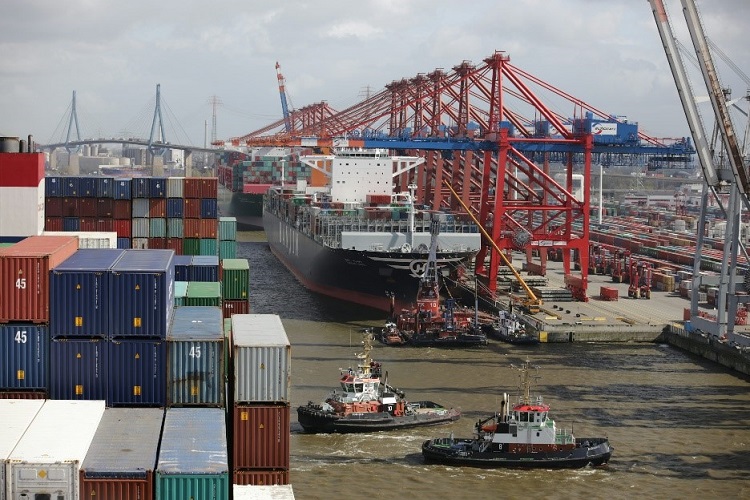In today’s interconnected world, businesses must navigate a landscape brimming with complexities and uncertainties. With globalization driving expansion into diverse markets, organizations face challenges such as regulatory compliance, market volatility, and geopolitical risks. Effective risk management has become a cornerstone for businesses aiming to thrive in such a dynamic environment. It provides a structured approach to identifying, analyzing, and mitigating potential threats, ensuring operational continuity and long-term success.
Global trade, for example, presents vast opportunities but is also fraught with challenges. Companies need to adapt to varying regulations, shifting trade agreements, and regional risks. Understanding these complexities is vital to creating resilient strategies that can withstand unforeseen disruptions. Risk management not only helps safeguard assets but also enhances a company’s ability to seize emerging opportunities in global markets.
Table of Contents
Adapting to International Trade Regulations
Navigating the maze of international trade laws is one of the most critical aspects of global risk management. Companies must comply with regulations that govern everything from tariffs to ethical sourcing practices. In this context, the role of a trade compliance consultant becomes indispensable. These professionals specialize in guiding businesses through the intricacies of international trade laws, ensuring that operations align with legal requirements across different jurisdictions.
These professionals provide expertise on export controls, import regulations, and sanctions that may impact a company’s ability to operate in specific regions. By addressing these compliance challenges, businesses can avoid penalties, legal disputes, and supply chain disruptions.
Such proactive measures not only protect organizations from financial loss but also bolster their reputation in global markets. By partnering with experts in trade compliance, companies position themselves as reliable entities capable of maintaining seamless operations across borders.
Identifying and Analyzing Potential Risks
Risk management begins with the identification of potential threats to business operations. In global markets, these risks may include economic instability, political unrest, environmental challenges, or cyber threats. For instance, businesses expanding into emerging markets might encounter regulatory unpredictability or infrastructure limitations, both of which require careful assessment.
Analyzing risks involves evaluating their likelihood and potential impact. This is often achieved through tools like risk matrices, scenario analysis, and predictive modeling. Such methods help organizations prioritize risks and allocate resources efficiently to address them. For example, a company entering a high-risk region might decide to invest in insurance or diversify its supply chain to mitigate potential losses.
Continuous monitoring is also vital. Global markets evolve rapidly, and risks that seemed negligible yesterday might become significant tomorrow. By maintaining a dynamic approach to risk analysis, businesses can adapt to changing conditions and preempt disruptions.
Mitigating Supply Chain Vulnerabilities
The global supply chain is a lifeline for many businesses, but it is also a significant source of risk. From natural disasters to trade disputes, supply chain disruptions can have far-reaching consequences. Effective risk management in this area involves diversifying suppliers, investing in technology for better visibility, and establishing contingency plans.
One strategy is to adopt robust supplier evaluation processes to ensure reliability and compliance with ethical standards. Additionally, businesses are increasingly leveraging technology like blockchain to enhance transparency and traceability in their supply chains. These innovations enable organizations to track goods at every stage, reducing the likelihood of fraud or delays.
Scenario planning is another essential tool. By simulating potential disruptions, companies can develop response strategies that minimize downtime and financial losses. For example, during the COVID-19 pandemic, organizations with pre-existing contingency plans were better equipped to handle the sudden halt in production and transportation.
Leveraging Technology for Risk Management
Technology has revolutionized the way businesses manage risks, offering tools that enhance efficiency and accuracy. Artificial intelligence (AI) and machine learning (ML) are particularly valuable, as they can analyze vast amounts of data to identify emerging trends and potential threats. For instance, predictive analytics can help companies anticipate market shifts or detect anomalies that might indicate fraud.
Another critical area is cybersecurity. As businesses digitize their operations, they become more vulnerable to cyberattacks. Implementing robust cybersecurity measures, such as encryption and multi-factor authentication, is essential to protecting sensitive data. Regular security audits and employee training also play a crucial role in mitigating cyber risks.
The Role of Corporate Culture in Risk Management
A company’s approach to risk management is often a reflection of its corporate culture. Organizations that prioritize transparency, accountability, and continuous improvement are better equipped to handle global challenges. Leaders play a pivotal role in shaping this culture by setting clear expectations, fostering open communication, and encouraging proactive problem-solving.
Employee training is another critical component. When team members understand the importance of risk management and their role in mitigating threats, they become valuable assets in safeguarding the organization. Regular workshops, simulations, and drills can help embed risk awareness into everyday operations.
Building Resilience for Long-Term Success
The ultimate goal of risk management is to create a resilient organization capable of thriving in a volatile global landscape. Resilience involves more than just recovering from setbacks—it’s about anticipating challenges and adapting to change. Companies that prioritize resilience are better positioned to seize opportunities and maintain a competitive edge.
One way to build resilience is through diversification. Whether it’s diversifying markets, revenue streams, or talent pools, this strategy helps businesses reduce dependence on any single factor. For example, a company that operates in multiple regions is less likely to be affected by localized economic downturns or political instability.
Another key aspect is innovation. Businesses that embrace change and invest in new technologies or processes are better equipped to navigate uncertainty. For instance, companies that adopted digital solutions early were able to maintain continuity during the global shift to remote work.
All in all, risk management is no longer an optional strategy for businesses operating in global markets—it is a necessity. By identifying potential threats, analyzing their impact, and implementing robust mitigation strategies, companies can safeguard their operations and achieve long-term success.
The integration of technology, the role of a compliance expert, and a strong corporate culture all contribute to an effective risk management framework.

